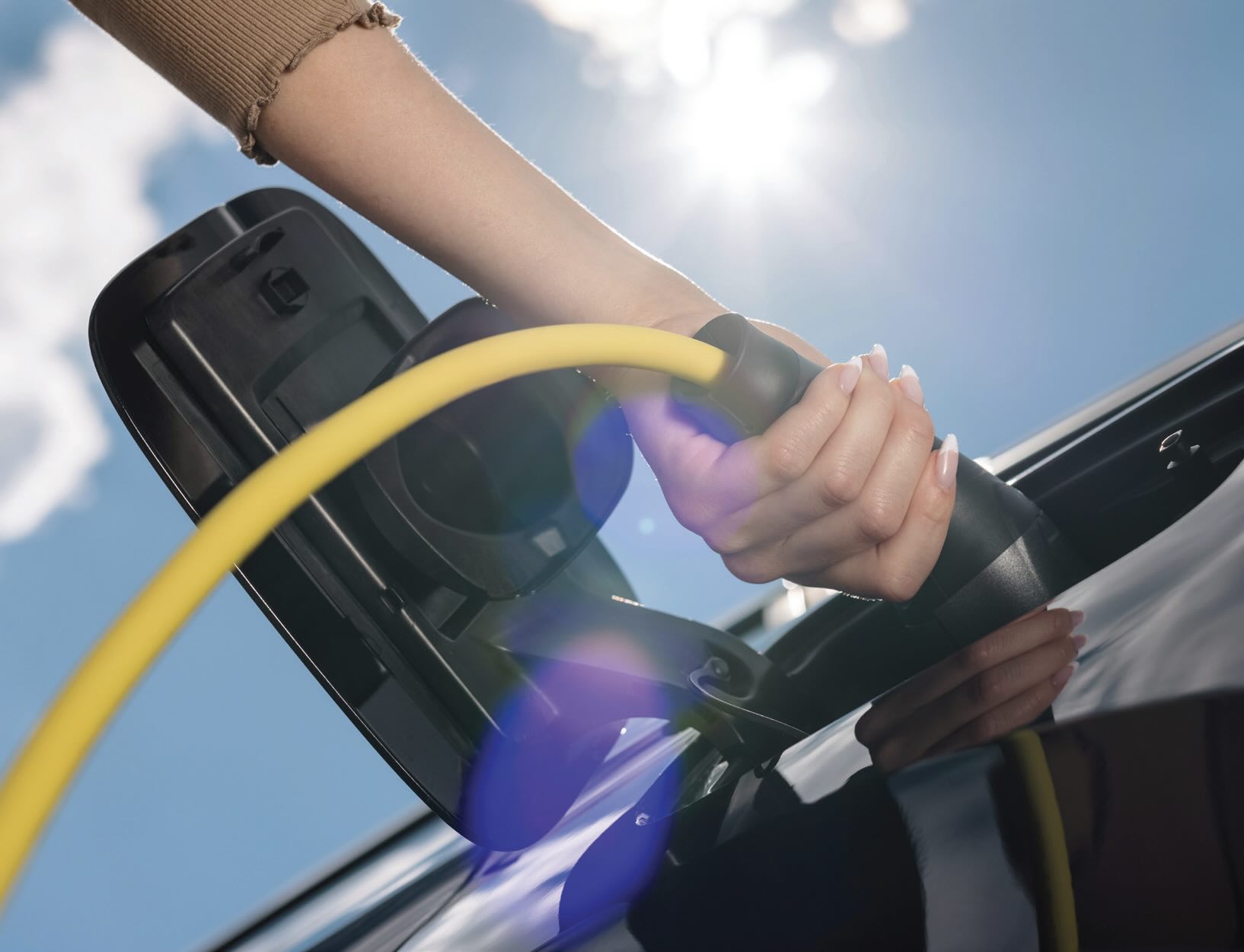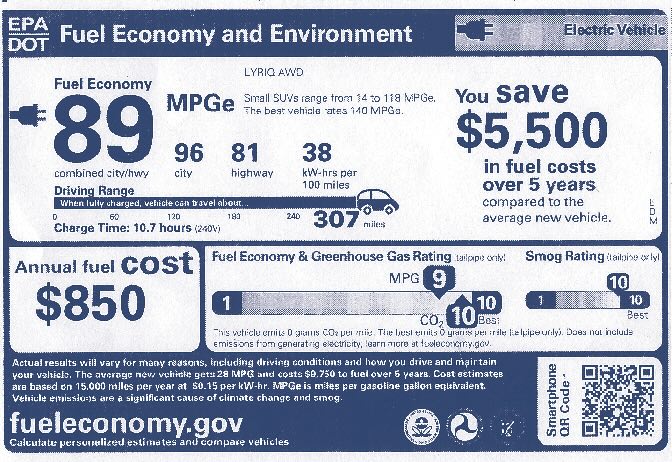Comparisons for electric and ICE vehicles
By Don Smolenski, Contributing Editor | TLT Machinery April 2025
There are different parameters and considerations to think about when evaluating these vehicles.

OK, I promise that this will be the last column on electric vehicles (EVs)—at least for a while. I think it would be very useful to compare parameters for a trip in an EV with those of a vehicle with an internal combustion engine (ICE). The EPA window sticker
1 is probably the best place to start. Figure 1 shows the fuel economy section of the 2024 Lyriq window sticker. MPGe is the electric miles per gallon equivalent, or how far the vehicle can travel on a specific amount of electricity. EPA has determined that one gallon of gasoline is equivalent to 33.7 kilowatt-hours (kWh), so EPA calculates the distance a vehicle can travel on 33.7 kWh. This is then divided by the energy consumption rate to get MPGe, which can then be used to compare the energy efficiency of electric, natural gas and/or plug-in hybrid vehicles. A higher MPGe indicates a more energy efficient vehicle. Annual fuel costs on the sticker assume 15,000 miles/year and a cost of 12.5 cents per kWh. Five-year fuel cost savings is compared to the average new vehicle.
 Figure 1. The fuel economy section of the 2024 Lyriq window sticker.
Figure 1. The fuel economy section of the 2024 Lyriq window sticker.
In the real world there are great variations in driving cycle (highway versus city) and ambient conditions (e.g., hot weather necessitating use of air conditioning). Also, there may or may not be data on the cost of an EV “fill up” as opposed to readily available cost per gallon and number of gallons on a gasoline fill up. The Lyriq’s window sticker shows city, highway and combined MPGe, as well as the expected range starting with a full (90%) charge.
See Table 1 for two months of my 2024 Lyriq’s statistics as examples.
 Table 1
Table 1
Of course there are many other considerations, such as the range of the vehicle under real-world conditions, the local cost of electricity and (as I have discussed in an earlier column
2) the charging infrastructure (are there fast charging stations readily available along the route?), and driving habits including load, terrain and climate. This makes hard cost comparisons difficult. Even CO
2 avoided depends on how the electricity is generated (solar versus coal fired generation for instance).
1.
https://www.merchantsfleet.com/future-of-fleet/mpge-explained/
2.
Smolenski, D. (2024), “Electric vehicles and charging adventures,” TLT,
80 (12), p. 104. Available at
www.stle.org/files/TLTArchives/2024/12_December/Machinery.aspx.
Don Smolenski is president of his own consultancy, Strategic Management of Oil, LLC, in St. Clair Shores, Mich. You can reach him at donald.smolenski@gmail.com.